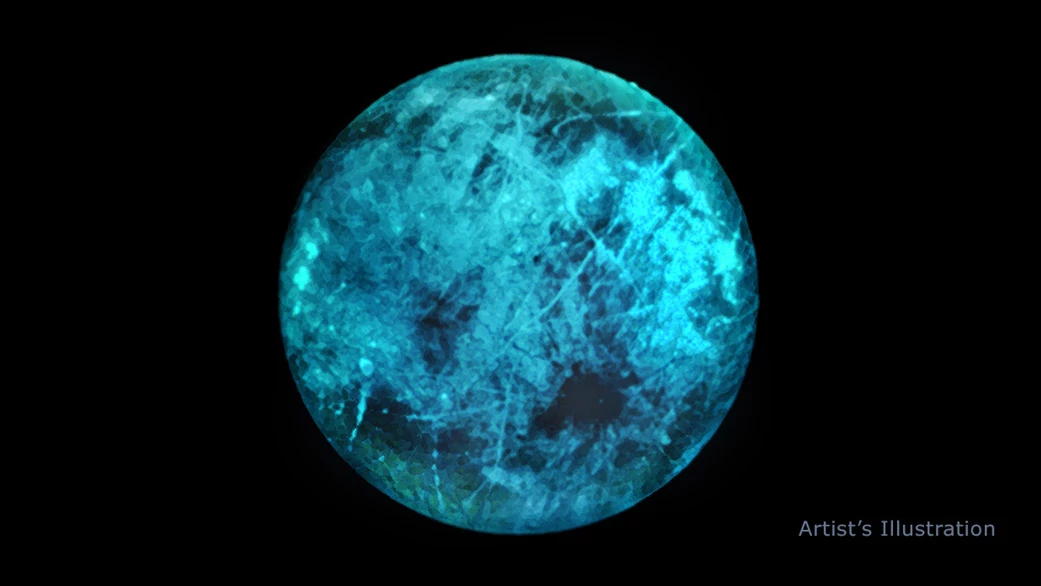Giving a new meaning to the word "moonshine," NASA scientists at the Jet Propulsion Laboratory (JPL) in Pasadena, California, have concluded that Jupiter's moon Europa glows in the dark due to being constantly bombarded with high-energy radiation.
When the Moon shines in Earth's sky, all of the light that lets us see it is reflected from the Sun. This is true of most of the other bodies in the solar system, but the moons of Jupiter exist in a ferociously radioactive environment where they are constantly bombarded with a wide variety of subatomic particles from the gas giant.
In order to get a better understanding of what effects this radiation has on the surface of a moon like Europa, a JPL research team created a laboratory mock-up of Europa's surface in a high-energy electron beam facility in Gaithersburg, Maryland, and subjected it to an instrument called Ice Chamber for Europa's High-Energy Electron and Radiation Environment Testing (ICE-HEART).
Initially, the purpose of the experiment was to look at the effects of the radiation bombardment on organic compounds. They found that when the Europan surface ice, which contains magnesium sulfate (aka Epsom salt) and sodium chloride (aka table salt) that percolates up from the interior, it glowed in the dark and that the glow varied with the composition of the ice. This means that the "dark" side of Europa actually has a glow of varying hue and brightness that is sometimes slightly green, slightly blue or white.
This glow is due to the molecules within the ice absorbing the radiation and then releasing the energy again in the form of visible light. According to NASA, a material that glows under exposure to radiation wasn't entirely unexpected, but that the glow changed with the material was a pleasant surprise because it gives scientists another tool for learning more about the interior of Europa. Because of this, mission specialists for NASA's Europa Clipper mission to Jupiter that is set to launch around 2024 are looking to see if the probe's instruments might be able to detect the glow.
"We were able to predict that this nightside ice glow could provide additional information on Europa's surface composition," says JPL scientist Murthy Gudipati. "How that composition varies could give us clues about whether Europa harbors conditions suitable for life."
The study was published in Nature Astronomy.
Source: NASA





